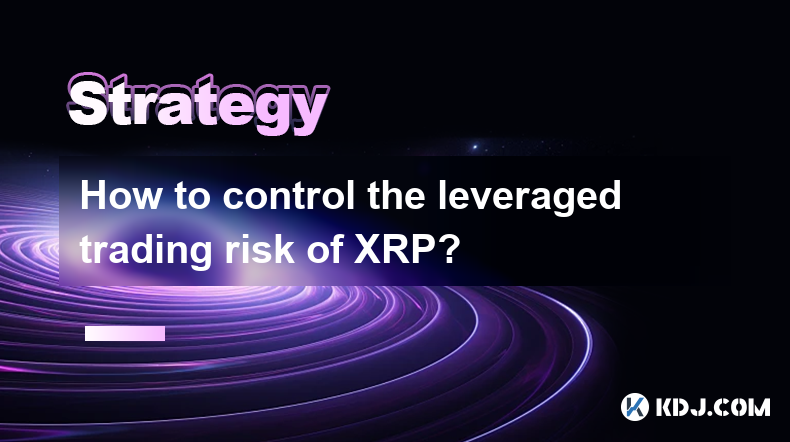-
 Bitcoin
Bitcoin $84,512.3183
-0.50% -
 Ethereum
Ethereum $1,588.1225
0.23% -
 Tether USDt
Tether USDt $0.9996
-0.01% -
 XRP
XRP $2.0642
0.48% -
 BNB
BNB $591.8173
0.47% -
 Solana
Solana $134.4792
-0.11% -
 USDC
USDC $0.9999
0.01% -
 Dogecoin
Dogecoin $0.1574
2.08% -
 TRON
TRON $0.2420
-2.16% -
 Cardano
Cardano $0.6293
2.51% -
 UNUS SED LEO
UNUS SED LEO $9.2288
1.66% -
 Chainlink
Chainlink $12.6112
1.23% -
 Avalanche
Avalanche $19.1082
0.52% -
 Toncoin
Toncoin $2.9983
2.24% -
 Stellar
Stellar $0.2408
0.84% -
 Shiba Inu
Shiba Inu $0.0...01225
4.64% -
 Hedera
Hedera $0.1660
2.02% -
 Sui
Sui $2.1233
0.65% -
 Bitcoin Cash
Bitcoin Cash $337.9337
1.98% -
 Litecoin
Litecoin $75.8547
1.24% -
 Polkadot
Polkadot $3.6527
0.78% -
 Hyperliquid
Hyperliquid $16.9003
-0.50% -
 Dai
Dai $1.0000
0.02% -
 Bitget Token
Bitget Token $4.4061
1.14% -
 Ethena USDe
Ethena USDe $0.9992
0.01% -
 Pi
Pi $0.6465
4.78% -
 Monero
Monero $214.7733
-0.74% -
 Uniswap
Uniswap $5.1912
0.85% -
 Pepe
Pepe $0.0...07309
1.65% -
 OKB
OKB $50.3150
0.15%
Bitcoin investment strategy: long-term holding vs short-term trading
Bitcoin investors can choose between long-term holding, betting on future growth, or short-term trading, aiming for quick profits amidst market volatility.
Apr 09, 2025 at 10:42 pm

Bitcoin, the pioneering cryptocurrency, has attracted a diverse range of investors, each with their own strategies for capitalizing on its potential. Two of the most common approaches to Bitcoin investment are long-term holding and short-term trading. Each method has its own set of advantages and risks, and understanding these can help investors make informed decisions that align with their financial goals and risk tolerance.
Understanding Long-Term Holding
Long-term holding, often referred to as "HODLing" within the crypto community, involves purchasing Bitcoin and retaining it for an extended period, typically years. The primary philosophy behind this strategy is the belief in Bitcoin's long-term value appreciation. Investors who adopt this approach are generally optimistic about the future of Bitcoin and its potential to become a widely accepted form of currency or store of value.
One of the key benefits of long-term holding is the potential for significant returns over time. Historical data shows that Bitcoin has experienced substantial growth over the years, with periods of high volatility often followed by even higher peaks. For instance, those who held Bitcoin from its early days have seen their investments grow exponentially. Additionally, long-term holding can be less stressful and time-consuming than active trading, as it requires less frequent monitoring of market movements.
However, long-term holding is not without its risks. The cryptocurrency market is known for its volatility, and Bitcoin's price can fluctuate dramatically in short periods. Investors must be prepared to weather these fluctuations without panic-selling, which could result in significant losses. Moreover, the regulatory environment surrounding cryptocurrencies is still evolving, and changes in laws or policies could impact Bitcoin's value and adoption.
Exploring Short-Term Trading
Short-term trading involves buying and selling Bitcoin over shorter time frames, ranging from minutes to months. Traders who engage in this strategy aim to profit from the frequent price movements of Bitcoin. This approach requires a more active involvement in the market, as traders need to constantly monitor price charts, news, and other market indicators to make timely decisions.
One of the main advantages of short-term trading is the potential for quick profits. Skilled traders can capitalize on Bitcoin's volatility to generate returns in a relatively short period. Additionally, short-term trading allows for greater flexibility, as traders can adjust their strategies based on current market conditions and their risk appetite.
However, short-term trading comes with its own set of challenges and risks. The market's volatility can lead to significant losses if trades are not executed correctly. Traders must have a solid understanding of technical analysis and market trends to make informed decisions. Moreover, the emotional aspect of trading can be taxing, as the pressure to make quick decisions can lead to stress and potential mistakes.
Comparing the Two Strategies
When comparing long-term holding and short-term trading, it's essential to consider factors such as investment goals, risk tolerance, and time commitment. Long-term holding is generally suited for investors who believe in Bitcoin's long-term potential and are willing to hold through market fluctuations. This strategy requires less time and effort but demands patience and a strong conviction in Bitcoin's future.
On the other hand, short-term trading is more suitable for those who are comfortable with higher risk and have the time and knowledge to actively manage their investments. This approach can be more rewarding in the short term but requires a significant time commitment and a deep understanding of market dynamics.
Risk Management in Long-Term Holding
Effective risk management is crucial for long-term holders of Bitcoin. One strategy is dollar-cost averaging (DCA), which involves investing a fixed amount of money at regular intervals, regardless of the price. This approach can help mitigate the impact of volatility by spreading out the purchase price over time.
Another important aspect of risk management for long-term holders is diversification. While Bitcoin may be the primary focus, holding a diversified portfolio of other cryptocurrencies or traditional assets can help reduce overall risk. Additionally, staying informed about market trends and regulatory changes can help long-term holders make more informed decisions about when to hold or sell their Bitcoin.
Risk Management in Short-Term Trading
For short-term traders, risk management is equally important but involves different strategies. Setting stop-loss orders is a common practice that helps limit potential losses by automatically selling Bitcoin if its price falls to a certain level. Traders should also consider position sizing, which involves determining the appropriate amount of capital to allocate to each trade based on their risk tolerance.
Technical analysis plays a significant role in short-term trading, as it helps traders identify potential entry and exit points based on historical price data and market indicators. Tools such as moving averages, relative strength index (RSI), and Bollinger Bands can provide valuable insights into market trends and potential price movements.
Choosing the Right Strategy
Ultimately, the choice between long-term holding and short-term trading depends on an investor's individual circumstances and goals. Those who are looking for a more passive investment approach and believe in Bitcoin's long-term potential may find long-term holding to be the more suitable strategy. Conversely, investors who are comfortable with higher risk and have the time and expertise to actively manage their investments may prefer short-term trading.
Frequently Asked Questions
Q: Can I combine long-term holding and short-term trading in my Bitcoin investment strategy?
A: Yes, many investors choose to adopt a hybrid approach that combines elements of both long-term holding and short-term trading. For example, an investor might hold a core position in Bitcoin for the long term while also engaging in short-term trades to capitalize on market volatility. This approach can help balance the potential for long-term growth with the opportunity for short-term profits.
Q: How can I determine if I am better suited for long-term holding or short-term trading?
A: To determine which strategy is better suited for you, consider your investment goals, risk tolerance, and time commitment. If you are looking for a more passive investment approach and are willing to hold through market fluctuations, long-term holding may be the better choice. If you are comfortable with higher risk and have the time and knowledge to actively manage your investments, short-term trading might be more suitable.
Q: What are some common mistakes to avoid in both long-term holding and short-term trading?
A: For long-term holders, common mistakes include panic-selling during market downturns and failing to diversify their portfolio. For short-term traders, common mistakes include overtrading, not setting stop-loss orders, and letting emotions drive trading decisions. Both groups should also avoid investing more than they can afford to lose and neglecting to stay informed about market trends and regulatory changes.
Q: How important is it to stay updated on news and developments in the cryptocurrency market for both strategies?
A: Staying updated on news and developments in the cryptocurrency market is crucial for both long-term holders and short-term traders. For long-term holders, understanding market trends and regulatory changes can help inform decisions about when to hold or sell their Bitcoin. For short-term traders, staying informed about news and market indicators is essential for making timely and informed trading decisions. Both groups can benefit from regularly following reputable cryptocurrency news sources and participating in community discussions.
Disclaimer:info@kdj.com
The information provided is not trading advice. kdj.com does not assume any responsibility for any investments made based on the information provided in this article. Cryptocurrencies are highly volatile and it is highly recommended that you invest with caution after thorough research!
If you believe that the content used on this website infringes your copyright, please contact us immediately (info@kdj.com) and we will delete it promptly.
- 3 Cryptos Heating Up, But This Time, Price-Conscious Buyers Are Stealing the Spotlight
- 2025-04-19 09:15:13
- This Week in Bitcoin: BTC Remains Stable Around $84k
- 2025-04-19 09:15:13
- Decentralized economy isn't always that decentralized
- 2025-04-19 09:10:13
- DIA to Host an AMA on X on April 23rd at 16:00 UTC
- 2025-04-19 09:10:13
- American Asset Management Company Canary Capital Has Taken a New Leap
- 2025-04-19 09:05:13
- Canary Capital Files to Launch the First US-Listed ETF Focused on Tron's TRX Token That Includes the Staking Feature
- 2025-04-19 09:05:13
Related knowledge

What does SHIB's Cardano coefficient below 0.3 indicate?
Apr 19,2025 at 08:00am
What does SHIB's Cardano coefficient below 0.3 indicate? The Cardano coefficient, often used within the cryptocurrency community, is a metric that helps investors and analysts understand the correlation between different cryptocurrencies. When it comes to SHIB (Shiba Inu) and its Cardano coefficient falling below 0.3, this indicates a relatively low cor...

Should I reverse the operation when the long-short ratio of SHIB perpetual contract reaches 3:1?
Apr 19,2025 at 04:36am
Understanding the Long-Short Ratio in SHIB Perpetual ContractsThe long-short ratio is a key metric in the world of cryptocurrency trading, particularly when dealing with perpetual contracts. For SHIB (Shiba Inu) perpetual contracts, this ratio indicates the balance between traders who are betting on the price of SHIB to rise (long positions) and those b...

Where is the average cost line for short-term holders of SHIB?
Apr 19,2025 at 03:42am
The average cost line for short-term holders of SHIB, or Shiba Inu cryptocurrency, is a critical indicator that provides insights into the behavior and sentiment of investors who have held the token for a shorter duration. This line represents the average price at which these short-term holders acquired their SHIB tokens. Understanding where this line s...

What should I do after the head and shoulders top pattern of XRP appears?
Apr 19,2025 at 01:28am
The head and shoulders top pattern is a significant technical analysis indicator that many traders and investors in the cryptocurrency market, including those involved with XRP, pay close attention to. When this pattern appears in the price chart of XRP, it is often interpreted as a bearish signal, suggesting that a reversal in the current uptrend may b...

What does it mean for XRP to confirm the breakout of the previous high and then step back?
Apr 19,2025 at 04:42am
What does it mean for XRP to confirm the breakout of the previous high and then step back? In the world of cryptocurrency, technical analysis plays a crucial role in understanding market movements and potential future trends. One specific scenario that traders and investors often analyze is when a cryptocurrency, such as XRP, confirms the breakout of a ...

How to control the leveraged trading risk of XRP?
Apr 18,2025 at 09:50pm
Leveraged trading of XRP, like any other cryptocurrency, involves significant risk due to the high volatility of the market. Understanding and controlling these risks is crucial for any trader looking to engage in leveraged trading. This article will guide you through the essential steps and strategies to manage the risks associated with leveraged tradi...

What does SHIB's Cardano coefficient below 0.3 indicate?
Apr 19,2025 at 08:00am
What does SHIB's Cardano coefficient below 0.3 indicate? The Cardano coefficient, often used within the cryptocurrency community, is a metric that helps investors and analysts understand the correlation between different cryptocurrencies. When it comes to SHIB (Shiba Inu) and its Cardano coefficient falling below 0.3, this indicates a relatively low cor...

Should I reverse the operation when the long-short ratio of SHIB perpetual contract reaches 3:1?
Apr 19,2025 at 04:36am
Understanding the Long-Short Ratio in SHIB Perpetual ContractsThe long-short ratio is a key metric in the world of cryptocurrency trading, particularly when dealing with perpetual contracts. For SHIB (Shiba Inu) perpetual contracts, this ratio indicates the balance between traders who are betting on the price of SHIB to rise (long positions) and those b...

Where is the average cost line for short-term holders of SHIB?
Apr 19,2025 at 03:42am
The average cost line for short-term holders of SHIB, or Shiba Inu cryptocurrency, is a critical indicator that provides insights into the behavior and sentiment of investors who have held the token for a shorter duration. This line represents the average price at which these short-term holders acquired their SHIB tokens. Understanding where this line s...

What should I do after the head and shoulders top pattern of XRP appears?
Apr 19,2025 at 01:28am
The head and shoulders top pattern is a significant technical analysis indicator that many traders and investors in the cryptocurrency market, including those involved with XRP, pay close attention to. When this pattern appears in the price chart of XRP, it is often interpreted as a bearish signal, suggesting that a reversal in the current uptrend may b...

What does it mean for XRP to confirm the breakout of the previous high and then step back?
Apr 19,2025 at 04:42am
What does it mean for XRP to confirm the breakout of the previous high and then step back? In the world of cryptocurrency, technical analysis plays a crucial role in understanding market movements and potential future trends. One specific scenario that traders and investors often analyze is when a cryptocurrency, such as XRP, confirms the breakout of a ...

How to control the leveraged trading risk of XRP?
Apr 18,2025 at 09:50pm
Leveraged trading of XRP, like any other cryptocurrency, involves significant risk due to the high volatility of the market. Understanding and controlling these risks is crucial for any trader looking to engage in leveraged trading. This article will guide you through the essential steps and strategies to manage the risks associated with leveraged tradi...
See all articles
























































































